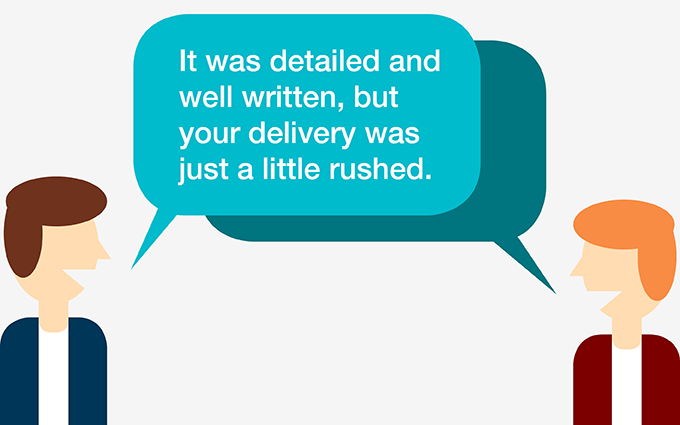How to communicate effectively and other helpful leadership tools for employers.
In 2016, we wrote about ways businesses can increase employee morale and performance, and the article has been one of our top-viewed blog posts to this day. We decided to revisit the advice we gave a year and a half ago and update with new research and leadership skills for business owners who’ve identified boosting employee morale and productivity as high-priority items to tackle in 2018.

It’s no secret that happy employees are more productive, but employee happiness starts at the top of the food chain with effective leadership. So what makes for an effective leader?
Encourage publicly, criticize privately
Humans are scientifically proven to produce better work when they’re motivated with encouragement, rather than criticism. Negative emotions, like fear and stress, cause the brain to narrow its focus and inhibit creative, cognitive thinking. When someone is stressed or scared, it’s harder to concentrate on the task in front of them because the amygdala takes center stage in the brain to prepare the body for a fight or flight response. And unless you work in an industry that requires those life or death physical reactions, this isn’t the best way for labor productivity to thrive.
Positive emotions, on the other hand, have the opposite effect on the brain. When we’re feeling relaxed and happy, our brains are in a better state to handle complex, cognitively-demanding jobs. We’re more open to outside ideas and collaboration, and have an easier time concentrating on difficult tasks.
For business owners focused on the bottom line and the myriad tasks that go into running a company, keeping a consistently upbeat and positive tone can be a challenge. But it’s a small habit that can have a big impact.

In his book, "Social Intelligence: The New Science of Human Relationships," science journalist Daniel Goleman discusses an experiment that analyzes the effects of positive and negative tones when giving employees feedback. The experiment found that the tone of voice the feedback was delivered in mattered more than the feedback itself. Negative criticism delivered in a positive tone left employees feeling good about the interaction, while positive feedback delivered in a negative tone left them feeling down, despite their recent achievements.
Critiques and performance reviews are a critical part of a successful workforce, but the way this feedback is communicated can go a long way in shaping company morale. Whether or not you’re happy with an employee’s performance, focus on the positive aspects of what was done well and what could be done better in the future. This will leave the employee feeling positively about their job, and with a renewed focus on how to improve, rather than launching into an unproductive spiral of self doubt and resentment.
If you do have to give an employee a negative critique, do so privately -- any sort of public embarrassment in the workplace is a surefire way to build animosity and bitterness within the company. Positive feedback, on the other hand, can and should be communicated publicly when appropriate. Leave notes that all employees can see that give shout outs for jobs well done, or nominate an employee of the month through an incentives or rewards program.
So how can you give more effective critiques?

Be specific. General, vague feedback is much less useful for employee productivity than clear and specific critiques. Rather than telling your employee, ‘Good job on that presentation,’ tell them what parts of the presentation were successful, and what could be improved. For example, “Your presentation was detailed and well-researched, but your delivery was a little rushed.”
Let your employee start the conversation. Ask them what they think they did well and what could be improved before starting in on your own critique. Giving the employee a chance to speak first will encourage them to think critically about their performance and make them more open to your feedback as well.
Be detailed, but don’t overwhelm. Specific feedback is great, but too much of it can have the opposite desired effect. Give your employee two or three pieces of feedback, and encourage them to take notes. Keep the conversation open and ask if the employee has any additional thoughts or questions of their own.

Don’t demand, educate
Business owners and department managers who lead through coaching and education, rather than with threats and intimidation, will not only have a more productive and happier workforce, but will also have a better understanding of their employees’ growth and abilities.
One-on-one employee training helps develop strong workplace relationships and promotes a culture of trust and openness. When an employee feels safe enough to go to their supervisor with a question or a problem, productive action can be taken more quickly to solve the task at hand.
Simply handing over a training manual or book of employee guidelines without any further guidance can result in employees feeling isolated, anxious and unsure of what to do when problems or questions inevitably arise. On the other hand, having a one-on-one, mentor-mentee relationship with every employee is an unrealistic expectation for bosses or managers who oversee dozens of workers across multiple departments and locations.
When bringing on new hires, it’s important to establish a culture of open communication in the workplace, and to encourage employees to ask questions. That being said, the CEO or even department head doesn’t necessarily need to be that first point of contact for every new hire.
This is where establishing a training hierarchy can be useful for improving both employee productivity as well as office morale. Identify top workers in each department and assign them the task of training new hires. That way, when a new employee has a question, they’ll already have a trusted coworker to turn to who can help without creating unnecessary distractions for the higher ups. This strategy of delegation also helps to foster a sense of trust between the C-Level executives, managers and shift workers.
Value the person as much as the results
Employees are much more likely to care about their work and in turn do a good job if they believe their boss also places value on the tasks they’re assigned. But if you want your employees to really go above and beyond in their work, they too must value, and - dare we say - enjoy the work they’re doing.
When you bring on new hires, take the time to learn about each new employees’ strengths and weaknesses. This can be done through a one-on-one interview or an employee satisfaction survey. Then, really pay attention to your employees’ answers. Let the results of the interviews or surveys help shape the way you delegate and assign work tasks. By setting your employees up for success, you’ll set your business up for success too.





